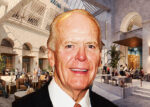How will a city full of cobwebbed offices affect the bottom line of San Francisco? The city’s supervisors want to know.
As its downtown struggles from an office exodus to remote work, officials want to determine how office vacancies will hurt city finances – and how to reverse the trend, the San Francisco Chronicle reported.
This week, Supervisor Rafael Mandelman called upon the city’s controller and treasurer to look at how business tax revenue has been affected by a drop in workers in office towers.
Supervisor Ahsha Safaí called for a hearing about the glacial economic comeback in a once-thriving downtown. Supervisor Catherine Stefani, who had already requested an analysis of how lower demand for commercial space would impact tax revenue, also called for a hearing.
At the same time, Supervisor Connie Chan said she wanted to push city leaders to look at how they can better support businesses in neighborhoods outside downtown.
The efforts come as two downtown San Francisco office buildings put up for sale last spring have been yanked from the market because bids came in far below the sellers’ worst-case-scenario projections.
That signals investors are shying away from the city, worrying real estate professionals.
The decline in the value of downtown office buildings will have long-term implications for the city’s tax base, as building owners ask the city for reassessments, according to the Chronicle.
In his letter to the controller, Mandelman said COVID-19 has had “profound impacts on where office work is performed,” citing the remote and hybrid work schedules embraced by businesses whose employees once filled downtown skyscrapers five days a week.
Such trends have been particularly acute in San Francisco, Mandelman said, due to the city’s high concentration of office workers and professional service companies that could easily adapt to a distributed work model.
San Francisco had the most population loss last year of any major U.S. city — with a particular decline in residents who have jobs that can be done from home. Its downtown economic recovery from the pandemic has been ranked last in the nation, with “major losses” in business tax revenue because fewer employees are doing their jobs within city limits, Mandelman said.
“To the extent that such shifts in where work is performed persist, it may have a significant impact on the city’s economy and tax revenues,” Mandelman wrote.
A steady exit by tenants left 22.4 percent of office space across San Francisco vacant, according to a July report, with vacancies ranging from 11.9 percent for prime Class A towers to 37.2 percent for non-prime Class C buildings.
The city’s Chief Economist Ted Egan predicted parts of downtown could see vacancies as high as 50 percent in the next two years.
— Dana Bartholomew
Read more


